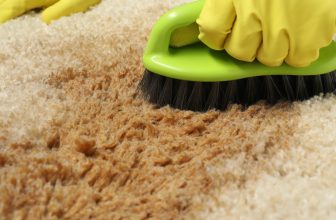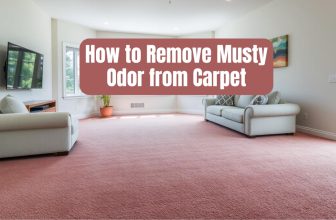DIY Homemade Carpet Cleaner | Safe, Effective & Budget-Friendly Solutions
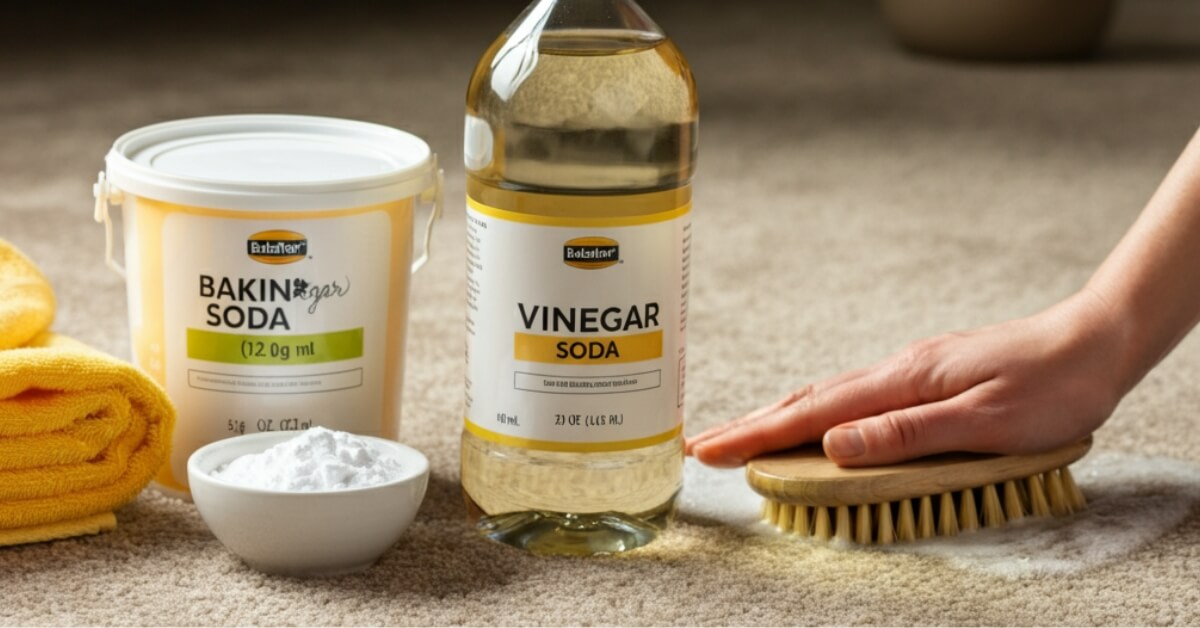
As an Amazon Associate I earn from qualifying purchases.
DIY homemade carpet cleaner is a safe, effective, and budget-friendly way to keep carpets fresh and clean without relying on harsh chemicals. Many commercial cleaners contain synthetic fragrances, bleaches, and other ingredients that can irritate sensitive skin or respiratory systems—and they often cost more than simple household alternatives.
With basic items like white vinegar, baking soda, and mild dish soap, you can remove stains, eliminate odors, and customize solutions for your carpet type. These recipes take just minutes to prepare, save money, and reduce plastic waste, making them an eco-friendly choice for everyday carpet care.
Contents
Why Choose a DIY Carpet Cleaner Over Store-Bought Options
When it comes to keeping your carpets fresh and spotless, DIY carpet cleaners offer a natural, cost-effective, and eco-friendly alternative to store-bought options. They put you in control of the ingredients, ensuring a cleaning solution that’s safe for your home and the environment.
Significant Cost Savings
Making homemade carpet cleaner costs a fraction of what you’d spend on commercial products. A gallon of white vinegar typically costs under $3 and can create dozens of cleaning solutions. Meanwhile, a single bottle of brand-name carpet cleaner often costs $8-15. When you calculate the per-use cost, DIY solutions save approximately 70-80% compared to store-bought alternatives.
Natural Ingredients Equal Safer Homes
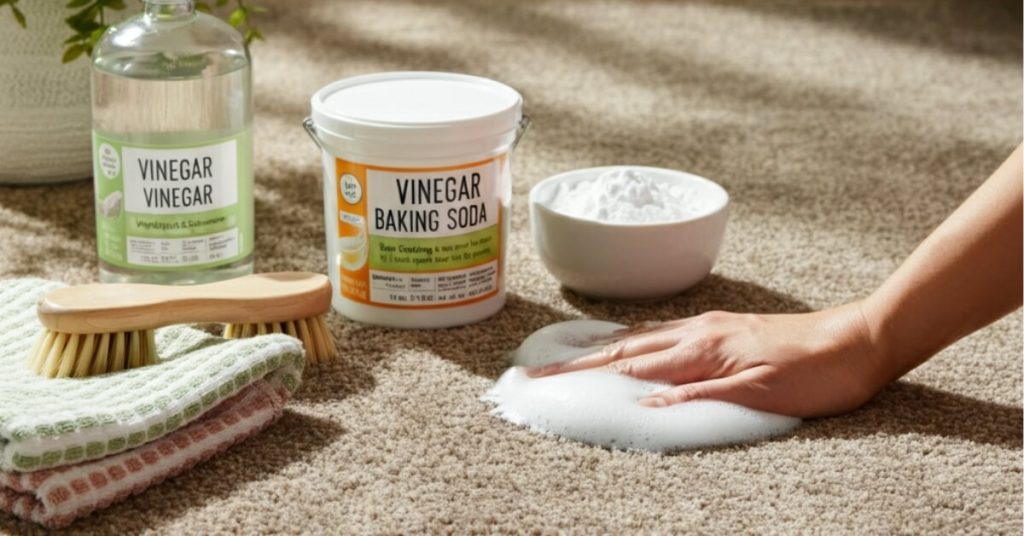
Commercial carpet cleaners frequently contain volatile organic compounds (VOCs), synthetic fragrances, and harsh detergents that can trigger asthma, allergies, or skin irritation. In contrast, homemade cleaners rely on natural ingredients that have been used safely for generations. This makes them particularly beneficial for households with children, elderly family members, or anyone with chemical sensitivities.
White vinegar, for example, naturally disinfects and deodorizes without leaving behind toxic residues. Baking soda absorbs odors and lifts stains through gentle abrasion. These ingredients break down into harmless components, unlike synthetic chemicals that may linger in carpet fibers.
Complete Customization for Your Needs
Store-bought cleaners offer one-size-fits-all solutions, but different carpets and stains require different approaches. With DIY recipes, you can adjust ingredient ratios based on your specific situation. Need stronger stain-fighting power? Add more vinegar. Dealing with persistent odors? Increase the baking soda concentration. This flexibility ensures optimal results for your unique cleaning challenges.
Moreover, you can avoid ingredients that might damage your particular carpet type. For instance, if you have natural fiber rugs, you can skip hydrogen peroxide and focus on gentler alternatives.
How to Make DIY Homemade Carpet Cleaner (Step-by-Step)
Cleaning your carpets doesn’t have to involve harsh chemicals or expensive products. With just a few simple, natural ingredients, you can create an effective DIY carpet cleaner that’s safe, affordable, and easy to make at home.
Essential Ingredients You’ll Need
Most effective homemade carpet cleaning solutions require just a few basic ingredients:
- White vinegar (not colored varieties)
- Baking soda
- Liquid dish soap (clear, gentle formulas work best)
- Hydrogen peroxide (3% solution)
- Warm water
- Essential oils (optional, for fragrance)
Basic Mixing Instructions
Start with a simple all-purpose formula that works for most cleaning situations. In a clean spray bottle, combine one cup of warm water, one-quarter cup of white vinegar, and one tablespoon of liquid dish soap. Shake gently to mix the ingredients without creating excessive foam.
For powder-based treatments, mix equal parts baking soda with a few drops of essential oil in a container with a tight-fitting lid. Shake thoroughly to distribute the oils evenly throughout the powder.
Spot Testing: Your Safety Net
Before applying any homemade cleaner to visible carpet areas, always perform a spot test in an inconspicuous location. Choose a small section behind furniture or in a closet corner. Apply a small amount of your cleaner and wait 24 hours to check for discoloration, texture changes, or other adverse reactions.
This simple step prevents potentially costly mistakes, especially with delicate or vintage carpets. Even natural ingredients can sometimes react unexpectedly with certain dyes or fibers.
Best Recipes of DIY Homemade Carpet Cleaner for Different Carpet Needs
When it comes to caring for your carpets, using the right cleaning solution can make all the difference. Below, you’ll find tailored DIY recipes designed to address a variety of common carpet cleaning needs, ensuring your rugs stay fresh, vibrant, and damage-free.
General Purpose Daily Cleaner
This gentle formula handles regular maintenance and light stains effectively:
- 2 cups warm water
- 1/4 cup white vinegar
- 1 tablespoon clear dish soap
- 5-10 drops essential oil (optional)
Mix ingredients in a spray bottle and shake lightly. This solution works well for weekly spot cleaning and general freshening.
Heavy-Duty Stain Fighting Formula
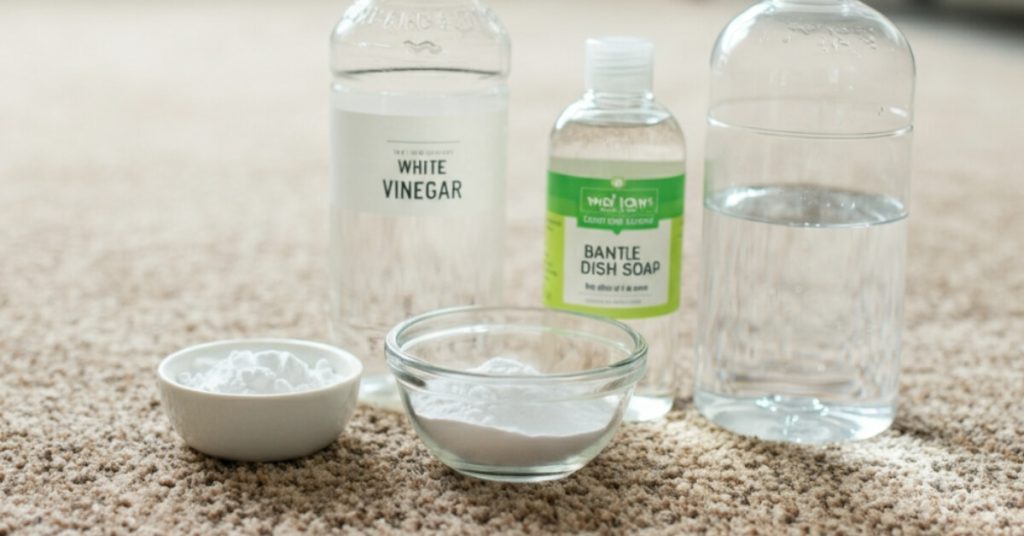
For tougher stains like wine, coffee, or mud, you need stronger cleaning power:
- 1 cup warm water
- 1/2 cup white vinegar
- 2 tablespoons hydrogen peroxide
- 1 tablespoon dish soap
Apply directly to stains and let sit for 5-10 minutes before blotting. The hydrogen peroxide provides extra stain-lifting power, but remember to test first since it can lighten some carpet colors.
Odor-Neutralizing Treatment
When carpets smell musty or retain cooking odors, this baking soda-based treatment helps:
- 1 cup baking soda
- 10-15 drops of essential oil
- 2 tablespoons cornstarch (helps with oil-based odors)
Sprinkle evenly over carpet, let sit for 30 minutes to several hours, then vacuum thoroughly. The baking soda absorbs odors while essential oils leave a fresh scent and for next steps you can read our guideline on How to Remove Musty Odor from Carpet.
Pet Stain and Odor Solution
Pet accidents require special attention to eliminate both stains and lingering odors:
- 1 cup water
- 1/3 cup white vinegar
- 2 tablespoons hydrogen peroxide
- 1 tablespoon enzyme detergent (or regular dish soap)
The vinegar neutralizes ammonia in pet urine, while hydrogen peroxide tackles stains and bacteria. Apply liberally and allow extra drying time for complete odor elimination.
How to Use DIY Carpet Cleaner Safely and Effectively
Cleaning carpets with DIY solutions is not only cost-effective but also safer for your home and family. With the right approach and ingredients, you can tackle stains and odors efficiently while protecting your carpet’s fibers and appearance.
Proper Application Techniques of DIY Homemade Carpet Cleaner
The way you apply the homemade cleaner significantly impacts the results. For liquid solutions, spray lightly rather than soaking the carpet. Over-wetting can damage the padding underneath and promote mold growth. Work in small sections, applying cleaner and addressing each area completely before moving on.
When dealing with stains, always blot rather than scrub. Scrubbing pushes stains deeper into fibers and can damage carpet texture. Use clean white cloths or paper towels, pressing firmly and lifting straight up to absorb moisture and dissolved dirt.
For powder treatments, sprinkle evenly and work into carpet fibers with a clean brush or your fingers. Allow adequate contact time for ingredients to work before vacuuming. Rushing this process reduces effectiveness.
Ventilation and Drying Considerations
Proper airflow speeds drying and prevents moisture-related problems. Open windows and doors when possible, and use fans to circulate air across cleaned areas. This prevents musty odors and discourages mold growth in carpet padding.
Most homemade cleaners require 2-4 hours of drying time, depending on humidity and air circulation. Avoid walking on damp carpets, which can reintroduce dirt and create matting.
Important Safety Precautions to use DIY Homemade Carpet Cleaner
Never mix different cleaning solutions together, even natural ones. Combining vinegar with hydrogen peroxide, for example, can create unstable compounds. Stick to one recipe at a time and rinse thoroughly between different treatments.
Avoid using vinegar-based solutions on natural stone tiles adjacent to carpets, as acid can damage marble or travertine. Also, skip hydrogen peroxide on wool or other protein-based fibers, which can suffer damage from oxidizing agents.
Final Verdict
DIY carpet cleaners offer an easy, affordable, and safe way to keep your floors looking and smelling fresh. By cleaning regularly, tackling spills quickly, and using simple household ingredients, you can prevent stubborn stains and odors while avoiding harsh chemicals. With a few trusted recipes and the right habits, maintaining beautiful carpets becomes simple and sustainable.
Frequently Asked Questions
Can I use vinegar on all types of carpet?
No, vinegar works safely on most synthetic carpets but may damage natural fibers like wool or silk. Always spot test first, especially on expensive or antique rugs.
Will baking soda discolor my carpet?
No, baking soda is color-safe for most carpets. However, letting it sit too long on damp carpets might leave white residue that requires thorough vacuuming to remove.
How often should I clean my carpet with homemade solutions?
Use light cleaning solutions weekly for high-traffic areas and monthly for the entire carpet. Deep cleaning with stronger formulas should happen every 3-6 months.
Is DIY carpet cleaner safe for wool rugs?
Yes, but use gentler recipes with less vinegar and avoid hydrogen peroxide entirely. Stick to mild dish soap and water for wool and other natural fibers.
Can I use essential oils in my carpet cleaner?
Yes, essential oils add a pleasant fragrance, and some have natural antimicrobial properties. Use 5-10 drops per cup of liquid cleaner to avoid overwhelming scents.
As an Amazon Associate I earn from qualifying purchases.



